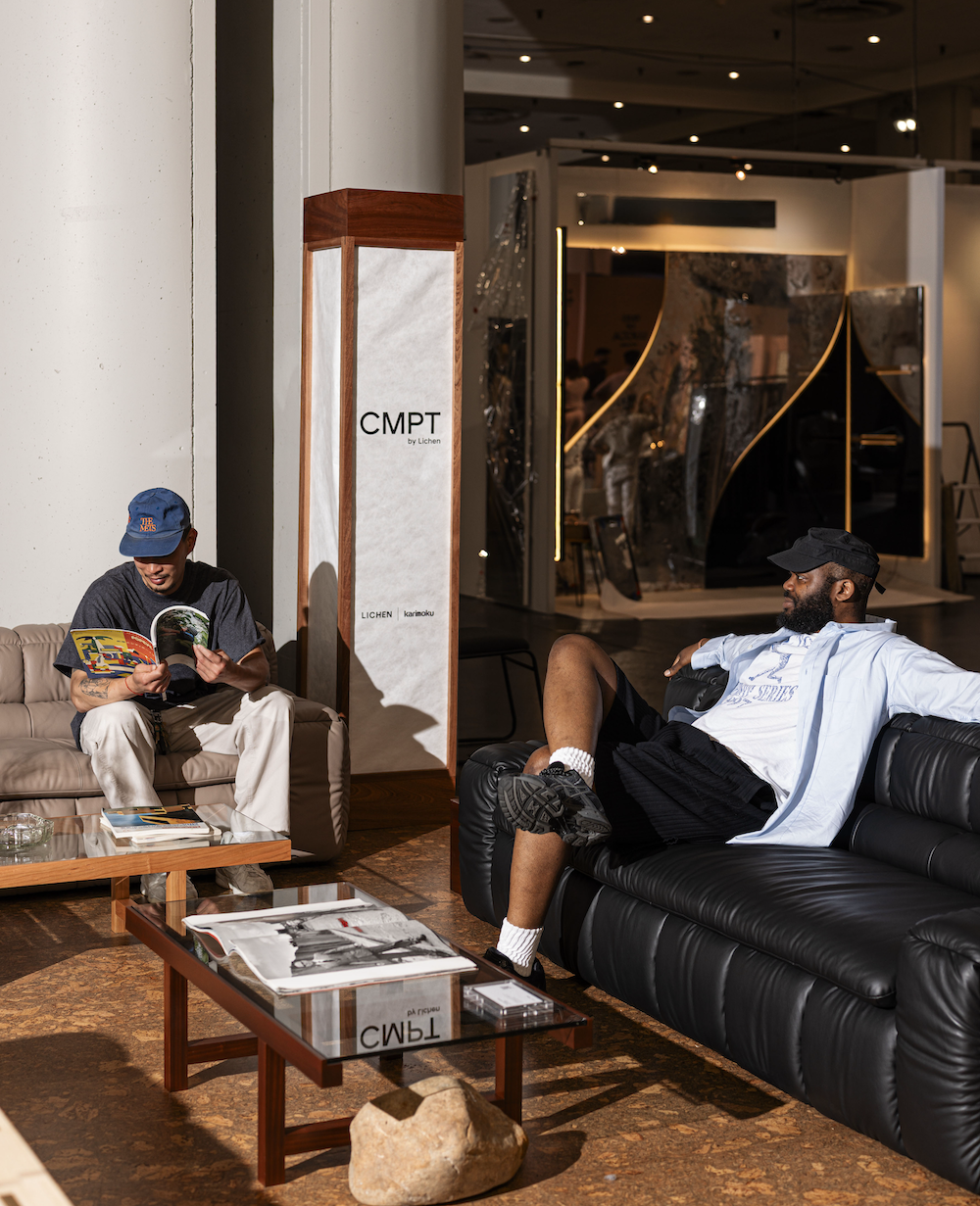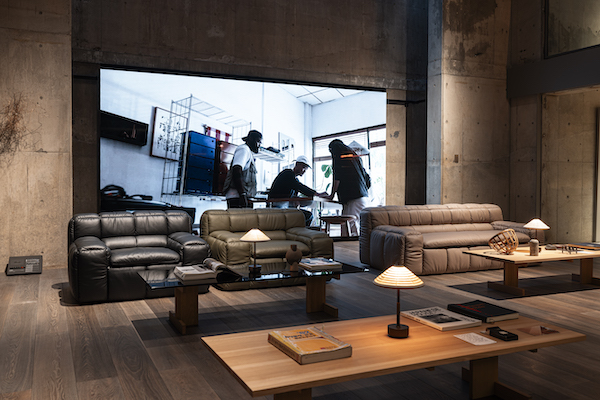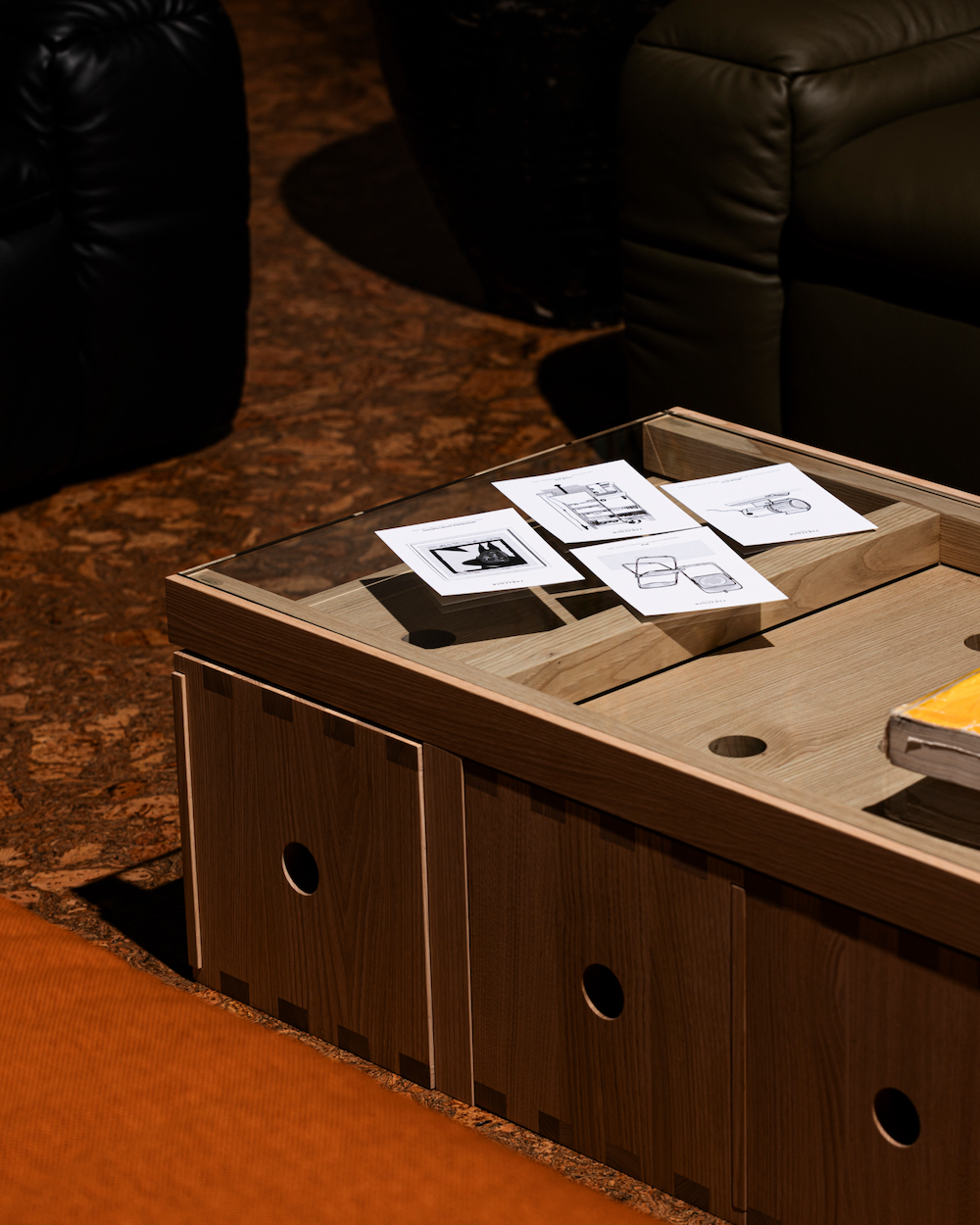

In October 2024, Karimoku Furniture Inc. launched a new project titled “KARIMOKU RESEARCH” The Survey at the core of the project takes up four themes a year, and is conducted in partnership with creators, designers, artists, companies, and other parties, both inside and outside Japan, on each theme. The insights obtained from the Survey provide the basis for the display and development of new solutions that are not confined to furniture.
The theme of the second Survey is “NEW TRADITION.” In addition to the design studio WAKA WAKA, Lichen, a design incubator and design studio, is participating in this installment of the Survey as a researcher. Lichen was founded by Jared Blake and Ed Be in New York in 2017. The members of its staff come from various fields, and include designers, artisans, problem-solvers, and carpenters. Its activities are on a global scale and center around furniture & spatial design, and exploration of the past and present involvement with the related elements.
An exhibition titled Karimoku Re;issue by LICHEN was held on the B1F level of the KARIMOKU RESEARCH CENTER from January 11 to April 18, 2025. We interviewed Jared and Ed about their approaches to the Survey in the process leading up to the commercialization of the sofas that Lichen was involved in and were shown at this exhibition.
This article, which constitutes the second half, delves deeper into the reasons why Lichen selected the ZE Sofa for reissue and how they came to grips with its “timeless” appeal. It also provides a behind-the-scenes look at the development of CMPT by Lichen, a new type of storage furniture tailored to urban living; takes up Lichen’s particularity about sustainable design; views its outlook for a project they have in mind to follow New Tradition; and tells a story that could provide tips for the future.

.jpg)
An exhibition titled Karimoku Re;issue by LICHEN was held on the B1F level of the KARIMOKU RESEARCH CENTER from January 11 to April 18, 2025. It displayed the ZE Sofa series at this exhibition. Ed and Jared from Lichen discovered this series while paging through our archives and catalogues of past furniture designs during their visit to Karimoku Furniture’s facilities in 2024. They resurrected it from a new perspective.
The ZE Sofa was originally sold from 1982 to 1988. At that time, there were two versions, 1-Seater and 3-Seater. Both were covered with leather upholstery and sold mainly for corporate conference rooms and boardrooms. Upon consideration of the wants and needs of customers in New York and Japan, Ed and Jared adjusted the size and came up with a version more for use in the home, 2-Seater.
In addition, they newly designed an ottoman and introduced an orange fabric style. Regarding color, the suppliers for the leather used in the past had all gone out of business, and it was therefore impossible to reproduce exactly the same materials. The two, however, did their best to produce a color format as close as possible to the original.
In this case, there were many other pieces of vintage furniture that were not reissued. Why did the two conceive the desire to bring back the ZE Sofa as their first choice? Concerning his surprise when first seeing the ZE Sofa, Jared said that it had a newness, as if it had been made only yesterday.
“It didn't look like it belonged there. Yeah, it looked like it was, like it just came out. It looked like it was made yesterday. It looks like the thing that when we're sourcing vintage furniture that's what we're looking for. Things that look exactly like that and then when we sat in it, it was like we don't need to make anything. Why would we design a sofa? They already did it, you know. It just looked like, you know, it was kind of trapped in time.” (Jared, Lichen)
Ed, too, described the excellence of the ZE Sofa while making reference to the gathering process (sewing to gather the fabric), which is the product of distinctive design and craftsmanship.
“It looks like the Bottega Veneta, like everything that's kind of going on with fashion right now. So just that's why, you know, I think Jared said it looked like it was there yesterday. It just speaks the same language as we're speaking right now, just by looking at it. And then you’ve got to sit in it. It was also super comfortable, which is, you know, the other half of it. It's luxurious and it's comfortable, two hard things to pin together at once in a product.” (Ed, Lichen)
.jpg)

In addition to the Karimoku Re;issue by Lichen exhibition at the KARIMOKU RESEARCH CENTER, Lichen manufactured CMPT by Lichen, a collection consisting of AppleBox, media storage units, stools, and other items. This collection made its debut at the International Contemporary Furniture Fair (ICFF) held in New York in May 2025.
The vision for CMPT by Lichen goes back about eight years. Before the two became partners, Jared said he had the idea for a project he called “Compartment” several years before.
“We felt that Compartment was more product-focused and Lichen is more human-focused. It's more organic because it's also something that's in nature (i.e., lichen). So that's the route that we chose to go down. (…) I guess you could say it's like, like it would be the “high-touch” part of it and Compartment would be the “high-tech” portion of both of our practices.” (Jared, Lichen)
Jared said that CMPT by Lichen finally took shape after they made the acquaintance of Karimoku Furniture, whom he characterized as a “new partner.”
“We could complete them (the collection products) and get them done, but it may not have been to the same standard and would not have as many people involved in it at the stage of just our small team. So where Lichen has grown from community and has grown from many hands and many perspectives on it from the outside, Compartment has been grown in a small collection from the inside, along with the support of Karimoku and Reina, of course, and all the engineers and all the people who believed in it.” (Jared, Lichen)
The item that became the source of CMPT by Lichen was AppleBox. This is a small multipurpose prop that is often used in photo studios for sitting, standing, putting something down, etc. Its utility embodies the spirit of CMPT by Lichen.
“Also, the line that we designed for Compartment and ICFF was a reaction to the small living spaces that we inhabit in New York and in Japan as well. And a lot of the pieces are meant to grow with you. So some of them are modular. Some of them are keeping in mind that you just have, you know, maybe not such a big space to invest into huge furniture. And maybe you might want to bring these pieces with you into your next apartment or house.” (Ed, Lichen)
Jared also emphasized that design taking consideration for storage was the most realistic orientation for life in cities such as New York and Tokyo, as Ed stated. They added that, in the first collection, they paid much attention to the question of how to naturally build in storage and modularity.
“I would say the number one thing would be storage in some capacity and modularity. Those are two – the two biggest words, I think, in our world. (…) Those two things are humanity. We're constantly moving. Our minds change. Our opinions change. Things that you can move with. I think in New York, the average lease is two years. Two to three years. Things that you can move with are things that you end up having for longer periods of time. You know, a more sustainable way.” (Jared, Lichen)
Survey 01 posts “NEW TRADITION” as its theme. Partly because it has dealt in vintage furniture right from its beginnings, Lichen declares that tradition is precisely its greatest inspiration. Jared said that, in this sense, they empathize with the idea of “NEW TRADITION.”
“We really appreciate NEW TRADITION because we're also trying to push out of the past. We have been coining the phrase ‘post mid-century.’ We are the first design company to promote post mid-century. (…) Our entry into design was traditional Herman Miller and Eames and designs from the ‘50s. (…) People don't live the same way they did in the ‘50s. A lot of that design has survived because of the quality and the function. But that doesn’t mean that it will fit in with contemporary society without modification. Yet as Ed pointed out, the need for storage has survived from all these time periods, so that's how we end up styling like some things are timeless. We combine this timeless value with a contemporary feeling.” (Jared, Lichen)
Lichen stated that one of the products that symbolizes such thinking and “NEW TRADITION” is the ZE Sofa. They reconstructed it by adding a contemporary interpretation here in 2025 to the perspective of the 1980s, when the product had an Italian modern design. In other words, they are offering the sofa as a contemporary product with the design from the 1980s virtually unchanged. Jared explained this is because the sofa has a timeless value that has retained its worth intact from the 1980s to the present, and the reason why the ZE Sofa is “NEW TRADITION.”
This collaboration with Karimoku Furniture is not ending as a one-time project; companies like Karimoku Furniture and Lichen can generate stimulating, meaningful projects time after time, through interaction in some form. Jared spoke about his anticipations in this aspect.
“Karimoku and Lichen are both living organisms in nature, right? Like moku and wood, and lichen, as you know, is like a moss or a fungus. These things are, they're constant. You know what I mean? They're not one generation. They are layers and layers and layers and layers of continuation. So how we even came to that conclusion, you know, we're inspired by nature. (…) We use technology, but we've both chosen natural living organisms as something to call, you know, something we're proud of and something to form a company name under. And that is how we honor our tradition. We honor our heritage and how we got here.” (Jared, Lichen)
As for the future activities of Karimoku Furniture and Lichen, Jared said he had the feeling that their next collection had already gotten off to a start through this Karimoku Re;issue by Lichen exhibition. He remarked that, apart from ZE Sofa, there are still a lot of ideas and projects of interest for resurrection in the present age. According to him, even without desperately trying to do “something new,” we could make a product of sufficient worth by breathing new life into a product of the past. In this connection, he related the following anecdote.
“I remember meeting somebody at, we have a friend that worked at Apple, and he had an iPhone 4 when we first met him. And I was like, why do you have an iPhone 4 if you work at Apple? Because I had like the 12 at the time, like, why do you have a 4? And he's like, it's a better phone—the shape. (…) It just completely changed what I thought of “better” because “better” doesn't always mean the new latest thing. (…) He worked at Apple, right? It's not like just a person; he is a designer at Apple. Even products from the past have a value that shines precisely because it is the present. I intend to treasure this view while thinking about our next project.” (Jared, Lichen)